Uruguayan Food Dishes: Basic Overview
Common Ingredients
Common Cooking Methods
Courses
Meals
Key Taste
Eating Etiquette
Meal Presentation
Culinary Festivals
Influence and Fusion
Popular Types of Uruguayan Dishes
-
Desserts
In Uruguay, desserts often feature rich, sweet flavors with a heavy emphasis on dairy products like milk and cheese.
-
Sandwiches
Uruguayan sandwiches are hearty, and filled with a variety of meats, cheeses, and vegetables thanks to the country’s abundant produce and livestock.
They serve as a staple for quick meals and often come with different ingredients.
-
Bread and Doughs
Bread and dough-based foods of Uruguay are fundamental, ranging from everyday bread consumed with meals to specialty doughs used in pastries and snacks.
-
Cakes and Pastries
In Uruguay, the tradition of making cakes and pastries are available everywhere, often featuring sweet fillings and fruit jams.
These baked goods are a blend of local flavors and European pastry techniques, enjoyed as desserts, snacks, or alongside drinks.
Uruguayan dishes are characterized by its rich fusion of European influences. Dishes from Spain, Italy, Portugal, and France play an important role, not to mention additional touches from German and Scottish immigrants.
This culinary blend of European dishes is the result of significant immigration waves that introduced a variety of European dishes, techniques, and ingredients to Uruguay.
The cuisine leans heavily on meat and dairy products, with beef being a central component. Seafood also plays a crucial role, drawing from the heritage of Spanish specialties and Portuguese delicacies.
Pasta and pizza, which are Italian culinary gems, are staples in the Uruguayan diet and often served with local sauces. Desserts and sweets from Italy and Spain are also essential to Uruguayan cuisine.
Aside from the dishes of Uruguay, I have more interesting things for you to uncover, like the beverages that go well with these specialties.
27 Popular Uruguayan Dishes with Filters
While having fun with your reading, don’t forget to use the filter system to reorganize these delicacies according to alphabetical order, dish types, ingredients, tastes, cooking techniques, and worldwide popularity.
Plus, there are even some fascinating categories of Uruguayan dishes to go through, like the most popular, national, traditional, street food, and fusion culinary creations:
Chivito
- National
Chivito is the national sandwich of Uruguay created in 1946 when an Argentinian woman ordered a young goat’s meat sandwich in a Uruguayan restaurant.
The sandwich creation uses beef steak along with tomatoes, ham, cheese, fried egg, lettuce, and tomatoes. French fries and Russian salad are usually prepared alongside chivito while serving.
Empanada Criolla
- Traditional
Empanada criolla is a crescent-shaped pie, fried or baked, filled with minced meat, onions, hard-boiled eggs, and regional spices. The dish is even found in the southern region of Uruguay.
In Uruguay and Argentina, empanada criolla has become the most favorite variation, typically stuffed with beef, though vegetarian options are readily available.
Choripán
- Street Food
Choripán is a Uruguayan dish named after ‘chorizo,’ a traditional semi-cured sausage from Latin America, and ‘Pan,’ meaning bread. Typically, the sandwich has an elongated shape similar to a hot dog.
Chorizo sausage is the main highlight of choripán made with a blend of two-thirds beef and one-third pork, slow-cooked over fire embers for a tender and juicier flavor profile.
Uruguayans often serve choripán in a baguette or pan catalán, a type of bread roll.
Pancho
- Street Food
Pancho is a kind of hotdog in Uruguay deeply influenced by European culinary traditions. The specialty is made with a beef-based frankfurter, nestled in a lengthwise bun.
Accompaniments include pickled vegetables like carrots, onions, red chili peppers, or mushrooms, topped with various sauces.
Two of the renowned pancho include panchos con panceta with sliced bacon and pancho porteños featuring mozzarella cheese.
Pizza a Caballo
- Fusion
Pizza a caballo is a deeply cherished pizza in Uruguay containing cheese, tomato, black pepper, hams, and fainá, a traditional flatbread.
The name means “pizza on horseback” and refers to the way the fainá is placed on top of the pizza, like a saddle.
Ñoquis
- Traditional
Ñoquis, or gnocchi in Spanish, in Uruguay, is a type of traditional Italian pasta. It primarily consists of potatoes, flour, and sometimes eggs.
These soft dough pasta are shaped into small, thick, oval balls and are often indented with a fork to hold the sauce better. People serve ñoquis with a variety of sauces, such as tomato, pesto, or a rich meat sauce.
In Uruguay and Argentina, there’s a tradition of eating ñoquis on the 29th of each month, where families gather to enjoy this dish, often placing money under their plates to attract prosperity and good luck.
Milanesa A La Napolitana
- Traditional
Milanesa a la Napolitana is a beloved Uruguayan dinner featuring flat, breaded meat.
In Uruguay, it is commonly prepared with chicken or beef and is distinguished by its topping of oregano, tomato, ham, and cheese. The dish is then baked until the cheese melts, creating a cheesy experience.
Jesuitas
- Traditional
Jesuita, also known as fosforito, is a baked sandwich from Uruguay and Argentina featuring puff pastry filled with ham and cheese. This dish’s puff pastry often goes with a sweet egg-white mixture.
Furthermore, it can be prepared with or without the savory filling, perfect for serving hot or cold as party fare, an appetizer, a snack, or even a full meal.
Asado
- Traditional
Asado, in Uruguay, is derived from the Spanish word “asar,” meaning “to grill,”. In Uruguay and Argentina, asado is a communal feast similar to a BBQ party.
It encompasses a broad array of grilled foods, including beef, the centerpiece in Uruguay, as well as poultry and vegetables. In some regions, cow’s intestines and gizzards are also up on the menu for grilling.
Bizcocho
- Traditional
Bizcocho is a term in Uruguay encompassing a wide array of bakery products, from sweet to savory pastries, including croissants, puff pastries, and bread-like snacks. These baked goods are essential to Uruguayan daily life, commonly enjoyed with yerba mate or coffee.
Often featured as a breakfast item or as an afternoon snack, Uruguayan bizcochos come in various flavors and fillings, such as dulce de leche, ham and cheese, and fruit jams.
Revuelto Gramajo
- Traditional
Revuelto gramajo is a hearty Uruguayan mix of onions, peas, diced ham, and fried julienne potatoes, all scrambled together with eggs in a pan.
According to legend, the dish was invented by an Argentinian man who, finding the kitchen of his Paris hotel closed, broke in to whip up a meal from available leftovers.
Torta Pascualina
- Traditional
Torta pascualina is a vegetarian pie in Uruguay that originated in the Liguria region of North Italy in the 15th century. It traditionally contains spinach, ricotta cheese, and hard-boiled eggs encased in a thin dough.
Swiss chard is also commonly used in the filling, sometimes substituting for spinach. Today, the pie is available in various fillings, cheeses, and sizes.
As for the Uruguayan version, torta pascualina is a common lunch dish, particularly popular during Lent, a 40-day period when Catholics abstain from meat.
Pamplona
- Traditional
Pamplona is a traditional Uruguayan meat specialty, commonly enjoyed at barbecues or during Christmas celebrations. It features a rolled beef loin seasoned and stuffed with a mix of cheese, cold cuts, and vegetables.
While beef is the traditional base, pamplona can also be prepared with chicken, pork, lamb, or rabbit, and is typically secured with cloth, elastic mesh, or aluminum foil for cooking.
It is roasted on a grill or in the oven until well-cooked and can be served as a standalone dish or alongside other grilled items.
Fainá
- Traditional
Fainá is a baked flatbread in Uruguay coming from Buenos Aires, Argentina, by Genovese immigrants. Known also as farinata or socca, the flatbread is crafted from chickpea flour.
Today, fainá is a staple side dish featured in Uruguay, offered as a snack or appetizer for accompanying with sauces or paired with cheese slices.
Tortas Fritas
- Traditional
Tortas fritas is a popular snack in Uruguay coming derived as a variation of kreppel, a type of German doughnut. Today, it’s paired with hot mate drink during the cold months.
The dough of these fried pies consists of regular ingredients such as wheat flour, salt, milk, and cow fat. Before frying, the dough is usually formed with one hole in the center of its round shape.
Sándwiches de Miga
- Traditional
Sandwiches de miga, also known as sándwhich olímpico or rafaelitos, is a typical bread creation of Uruguay and Argentina.
For preparation, the sandwiches’ brown skin must be removed first, as the name “Miga” indicates “crumbs” or the inner part of the bread.
Then, in the middle of two sandwich slices come with red chili pepper, mayonnaise, cheese, ham, boiled egg, tomato, and lettuce. It can be used as a quick lunch or breakfast meal.
Ensalada Rusa
- Traditional
Ensalada rusa is a salad commonly served as a side dish to chivito in Uruguay. Despite its name translating to “Russian salad,” the mixture is more like a Uruguayan-style salad.
The Uruguayan version of ensalada rusa typically includes potatoes, carrots, and peas, with hard-boiled eggs and olives added occasionally.
Alfajores
- Traditional
Alfajores are delightful Uruguayan cookies consisting of two soft biscuits sandwiching a layer of dulce de leche, a caramel-like sauce. These cookies are prized for their ability to melt in the mouth with an exquisite sweetness.
Enjoyed as both a dessert and a snack, alfajores are a favorite treat for school children and adults. However, Uruguayans usually coat alfajores in milk chocolate for extra textures and flavors.
Garrapinyades
- Street Food
Garrapinyades are a popular confectionery in Uruguay and Latin American countries primarily made from almonds. The snack involves caramelizing almonds with sugar and water, requiring continuous stirring at high temperatures.
As the water evaporates, the sugar caramelizes, it forms a crunchy coating around the almonds. This results in a shiny, candy-like treat with a sweet and nutty flavor.
Garrapinyades are a common sight at fairs and markets, where they are enjoyed by many.
Garrapiñada
- Traditional
Garrapiñada is a sweet snack found widely across the streets in Uruguay. The treat revolves around pan-roasting peanuts in a mixture of water, vanilla, and sugar until caramelized.
You can also find Uruguayans making candied walnuts or almonds using the same method.
Martín Fierro
- Traditional
Martín Fierro is a Uruguayan dessert named after the protagonist of José Hernández’s 1872 poem. It’s believed to be the poet’s preferred sweet treat.
The Uruguayan adaptation of this treat features quince paste with a tart flavor placed atop Manchego cheese for a rich profile.
Churros
- Traditional
Churros are fried dough in Uruguayan cuisine originating from Spain. These dough sticks are known for crunchiness dusted with granulated sugar and cinnamon upon serving.
In Uruguay, churros come in an array of variations, with chocolate and dulce de leche fillings being particularly favored. Innovatively, Uruguayans have also created several savory versions, often filled with melted cheese.
Pastafrola
- Traditional
Pastafrola is a sweet-tart filled with a mixture of jam in Uruguay that originated in Italy. Traditionally, it’s made of a pie crust filled with quince paste and topped with thin-striped lattices.
In Uruguay, you can find several versions of the filling for pastafrola, such as chocolate, strawberry paste, or dulce de leche. However, the oldest and perhaps best pastafrola uses dulce de membrillo, a native paste from quince fruit.
Arroz Con Leche
- Traditional
Arroz con leche is a well-known rice dessert in Uruguay. The treat is a simple combination of rice, milk, sugar, and a garnish of cinnamon.
Interestingly, the Uruguayan rendition incorporated egg yolk into the pudding, making it notably creamier. Occasionally, a touch of dulce de leche is also added to enhance the flavor.
Flan con Dulce de Leche
- Traditional
Flan con dulce de leche is a treat in Uruguay, also known as caramel pudding, creme caramel, and caramel custard. The concept is basically serving soft custard flan with sweet and milky dulce de leche to enhance the flavor.
Alternatively, flan con dulce de leche is also served with cream for a different twist.
Dulce de Leche
- Traditional
Dulce de leche is a caramelized milk in Uruguay, traditionally made by simmering cow’s milk and sugar until it achieves a creamy, spreadable consistency.
It’s often enhanced with vanilla for added aroma. Resembling caramel in flavor but creamier in texture, dulce de leche is used in many dessert recipes.
Dulce de Membrillo
- Traditional
Dulce de membrillo is a sweet, dense paste in Uruguay made from quince boasting a dark red color. This traditional confection is popular in Spain, Argentina, Uruguay, and other Latin American countries, as well as in Portugal, where it’s known as “marmelada”.
The sweet treat requires cooking quince with sugar until it thickens into a firm, jelly-like consistency. Dulce de membrillo is commonly served with cheese, especially Manchego, as a dessert or snack.
Cut into cubes for serving, it comes with a unique flavor profile that balances sweetness with the natural tartness of quince.
What Uruguayan Dishes to Pair with Beverages?
In Uruguayan cuisine, dishes are often enjoyed with interesting drinks from Uruguay that complement their flavors. Here are some combos to give them a try:
Have you picked up any dishes from Uruguay? I’d love to hear those thoughts in the comment section!
Also, don’t forget to share these dishes with your loved ones. I’m positive that they’ll find it helpful just as you do.



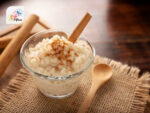





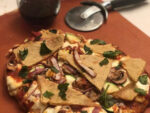
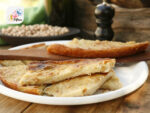
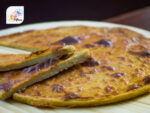

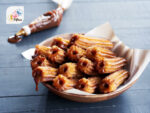

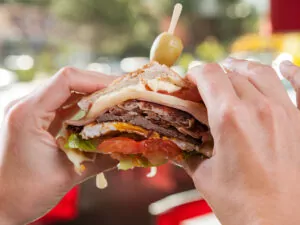
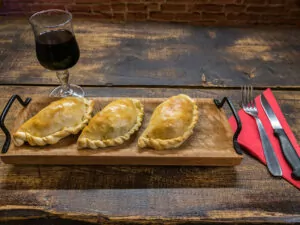
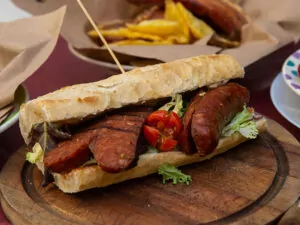
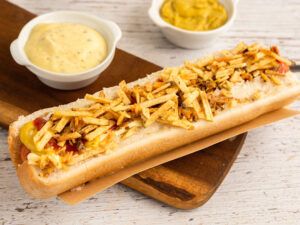
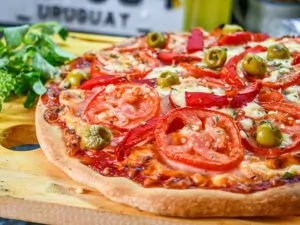
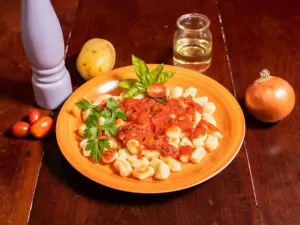
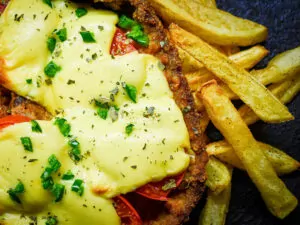
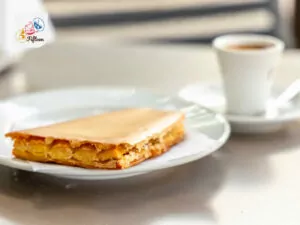
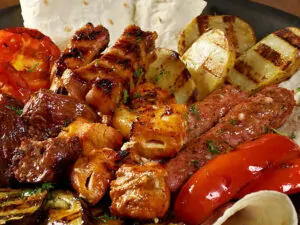

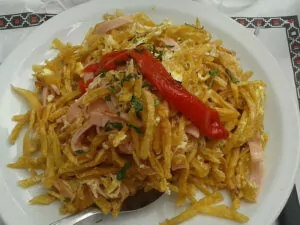


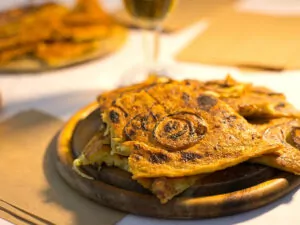
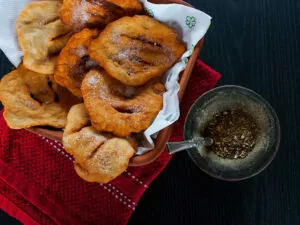
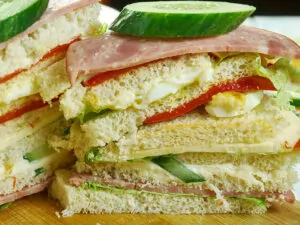
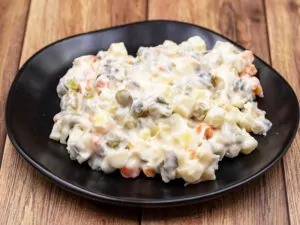

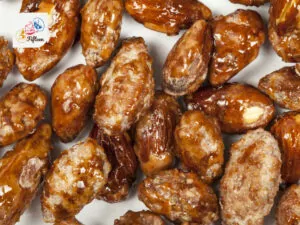
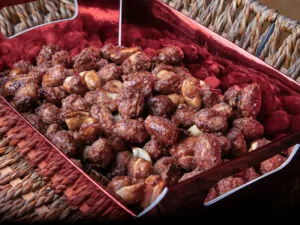
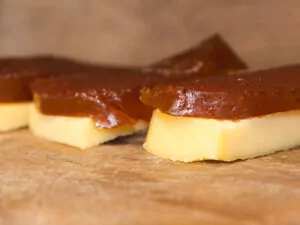
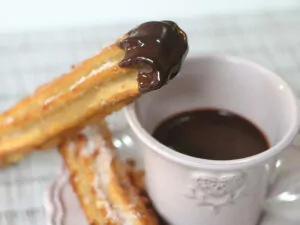


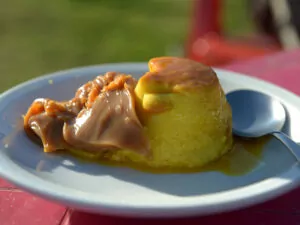
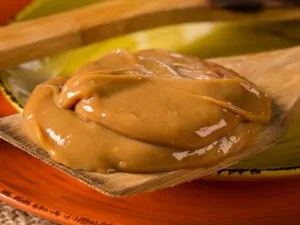
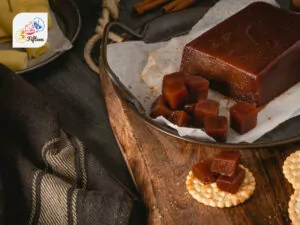

Jamie Scott
Editor in Chief, Senior Content Writer
Expertise
Home Cooking, Meal Planning, Recipe Development, Baking and Pastry, Food Editor, Cooking-video Maker, Western Food Evaluation Expert
Education
Le Cordon Bleu College of Culinary Arts
Local Community College, New York, NY
Jamie Scott is a skilled culinary expert and content creator specializing in Western cuisine. With over 15 years in the culinary field and formal training from Le Cordon Bleu, Paris, Jamie deeply understands how to blend nutrition with delicious flavors. His passion for cooking matches his commitment to making healthy eating accessible and enjoyable.
On Fifteen.net, Jamie brings a fresh perspective to classic dishes and beverages, offering readers insightful recipes, cooking tips, and a fresh view on meal planning that emphasizes taste, health, and simplicity.